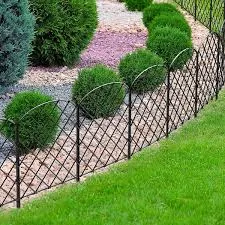Setting Up an Electric Fence for Horses
Setting up an electric fence for horses can be an essential step in creating a safe and controlled environment for your equine companions. An electric fence serves as an effective barrier that helps keep horses contained while also deterring predators and unwanted wildlife. Here’s a guide to help you get started.
Choosing the Right Materials
Before you begin installation, gather the necessary materials. You'll need electric fence posts, a charger, insulated wiring, insulators, grounding rods, and warning signs. It's crucial to choose high-quality materials designed for equine use; this ensures safety and durability. Choose posts made of fiberglass or wood, as they provide excellent strength and support.
Planning the Layout
Planning is vital when setting up your electric fence. Begin by assessing the area where you want to confine your horses. Consider factors such as terrain, existing structures, and the number of horses you plan to contain. A well-planned layout will not only enhance the efficiency of the fence but also minimize risks of injury or escape.
Installing the Posts
Once you've planned your layout, it's time to install the fence posts. Mark the locations for each post, typically spacing them 10 to 20 feet apart depending on the terrain and design. Dig holes for the posts—ideally, at least two feet deep—to provide stability. Set the posts securely in place, ensuring they're straight and aligned correctly. If you're using wood posts, consider treating them to prevent deterioration.
setting up an electric fence for horses

Wiring the Fence
After setting up the posts, the next step is wiring the fence. Start by attaching the insulators to each post. These insulators will hold the wire securely while preventing electrical leakage. Run the electric wire through the insulators, ensuring it’s taut and free from slack. It’s advisable to use multiple strands of wire to enhance visibility and strengthen the barrier; typically, two to four strands spaced at different heights will suffice.
Connecting the Charger
The charger is the heart of your electric fence, providing the necessary voltage to deter horses. Choose a charger suited for the distance and type of fence you are utilizing. When connecting it, ensure that the charger is grounded properly; this usually involves driving grounding rods into the ground near the charger. Follow the manufacturer’s instructions carefully to ensure safe and effective operation.
Testing the Fence
Once everything is in place, it's critical to test the electric fence to ensure it's functioning properly. Use a voltage tester to check the voltage levels along the fence. Ensure that the current is strong enough to deter horses but safe enough to avoid injury. Always monitor the fence regularly for any wear and tear or maintenance needs.
Conclusion
Setting up an electric fence for horses is a manageable but crucial task for any horse owner. By following the right steps, using quality materials, and ensuring proper installation, you can create a secure environment for your horses. Always prioritize their safety and comfort, and with proper care, your electric fence will serve you well for years to come.
















